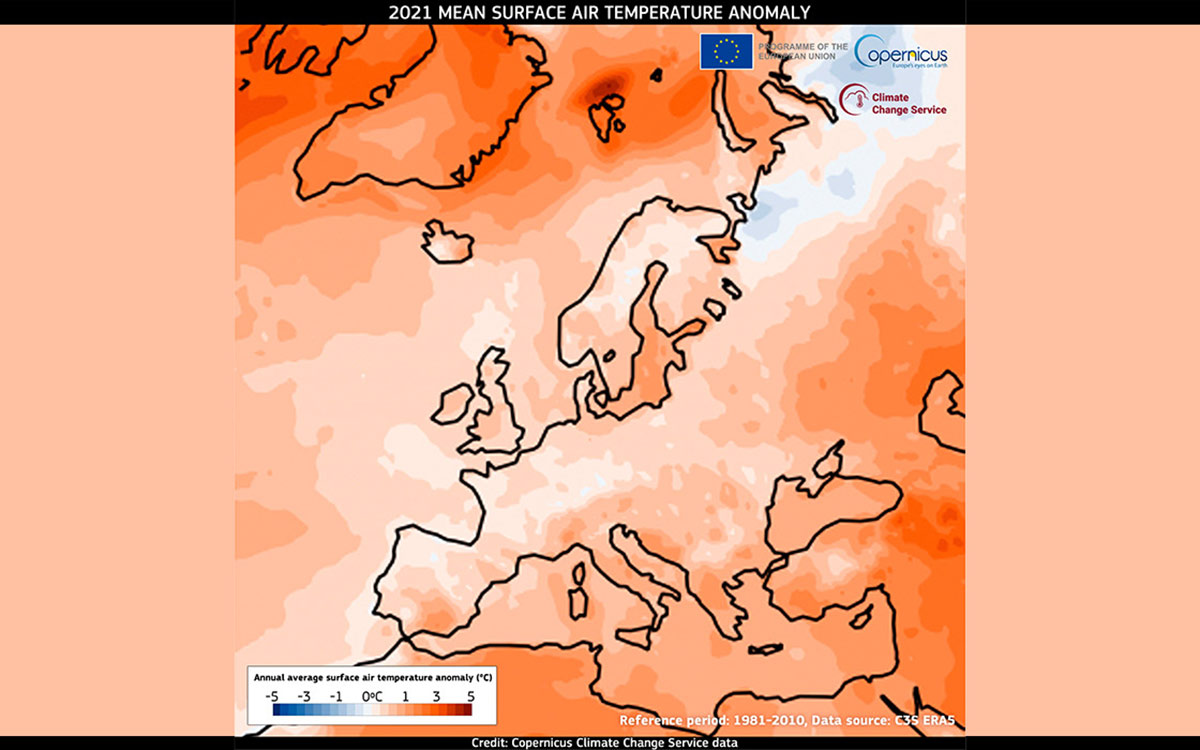On November 2, this image went around the web:
.jpg)
It has been posted on the website of Copernicus, the European Union's Earth observation program dedicated to monitoring our planet and its environment by providing satellite observation-based information services through collaboration with member states, the European Space Agency (ESA), the European Organization for the Exploitation of Meteorological Satellites (EUMETSAT), the European Center for Medium-Range Weather Forecasting (CEPMMT), European Union agencies and Mercator Océan.
The image is part of the latest report on the state of Europe's climate compiled by C3S, the Copernicus Climate Change Service, which contains a detailed analysis of rising temperatures, heat waves, and extreme weather events on our continent in 2021. The uniform color tending toward red shows how the whole of Europe throughout last year experienced anomalous temperatures.
It was not an exceptional year, but a year that clearly and dramatically showed the ongoing trend. Confirmed, as far as Italy in particular is concerned, by the latest data published in recent days by the Institute of Atmospheric Sciences and Climate (ISAC) of the National Research Council (CNR), which preliminarily analyzed the temperatures recorded in the peninsula during the month of October 2022. The one we just left behind.
What was the result? That it was the second warmest October since 1800. If, however, the comparison with the time series is confined to northern regions alone, that is when the result changes: it was the hottest October on record, averaging 3.18°C higher than the period from 1991 to 2020.
To make us understand how the situation is set to worsen, comes further data. They are those made public Nov. 11 thanks to a study by scientists from the Global Carbon Project (Global Carbon Budget 2022, Pierre Friedlingstein et al.), an organization that calculates man-made CO2 emissions that are a major cause of climate change. The study states that carbon dioxide emissions from fossil fuel use are higher in 2022 than in the previous year. A figure that, if the trend is not reversed quickly, will result in the possibility (the estimate is 50 percent) that in nine years' time the 1.5°C increase in average global temperature compared to the pre-industrial period will be reached. A ceiling, remember, the 2015 Paris Agreement (where the 2030 Agenda with its 17 goals was also signed and shared) committed member states never to exceed.



